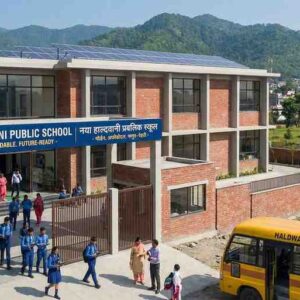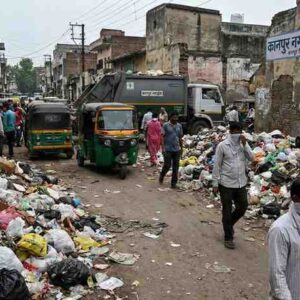New Delhi, India, 2025— In a diverse and sprawling democracy like India, the media holds an unparalleled role as the “fourth pillar.” Its ability to inform, educate, and empower citizens is central to the functioning of democratic ideals. From village corners to metropolitan hubs, the media shapes public opinion, influences policy debates, and provides a platform for marginalized voices. However, as corporatization, misinformation, and political pressures grow, its role is increasingly under scrutiny.
This article critically examines the media’s role in shaping democratic ideals at the grassroots level in India, supported by real-world examples and data.
Media as the Lifeblood of Indian Democracy
1. Bridging the Urban-Rural Divide
India’s media landscape, spanning newspapers, television, and digital platforms, plays a vital role in connecting rural and urban audiences.
- Example: Regional newspapers like Dainik Bhaskar and Eenadu reach millions in Tier-2 and Tier-3 cities, providing localized coverage on governance, welfare schemes, and elections.
- Impact: Access to information empowers rural voters, ensuring participation in democratic processes, as seen in the 82% voter turnout in the 2024 General Elections (Election Commission of India).
2. Amplifying Grassroots Movements
Media coverage has often been instrumental in drawing national attention to local issues.
- Case Study: During the farmers’ protests (2020–21), independent media platforms like The Wire and regional channels extensively covered grievances, mobilizing support across the country.
- Impact: Sustained coverage forced policymakers to engage with farmers, eventually leading to the repeal of controversial laws.
Challenges to Media’s Role in Indian Democracy
1. Growing Corporate Influence
- Fact: Over 75% of India’s news channels and newspapers are owned by large corporate houses (Media Ownership Report, 2024).
- Impact: Ownership patterns often skew reporting towards business or political interests, sidelining issues like unemployment, environmental degradation, and tribal rights.
- Example: Coverage of industrial projects in tribal areas often highlights economic benefits while downplaying displacement concerns, as reported by the Ministry of Tribal Affairs (2024).
2. The Misinformation Epidemic
- Reality: India faced over 120 million misinformation incidents in 2024 alone, primarily through social media (Digital Media Trust Report, 2024).
- Impact: Fake news and communal narratives polarize communities, undermining democratic harmony and informed decision-making.
- Example: Communal misinformation during elections has been flagged as a major concern by the Election Commission of India (2025).
3. Declining Press Freedom
- Fact: India ranked 150th in the World Press Freedom Index (2024), reflecting increasing political and economic pressures on journalists.
- Example: Journalists exposing corruption or environmental violations face legal harassment, arrests, and even physical threats.
- Impact: A weakened press undermines its watchdog role, limiting accountability in governance.
The Role of Local Media in Strengthening Democracy
Local and regional media outlets are often closer to the grassroots, offering nuanced coverage of community-specific issues.
- Example: Vernacular newspapers like Gaon Connection and local radio programs provide platforms for farmers, laborers, and women to voice concerns.
- Case Study: In Odisha, community radio stations covered the impact of Cyclone Fani in 2024, facilitating timely relief efforts and raising awareness about disaster preparedness.
Digital Media and Citizen Empowerment
The rise of digital platforms has democratized information-sharing in India, enabling citizens to participate in shaping public discourse.
- Example: Platforms like Twitter and Instagram have become hubs for grassroots activism, from the #SaveAareyForest campaign to protests against the Citizenship Amendment Act (CAA).
- Impact: Digital media provides marginalized groups with a voice, bypassing traditional gatekeepers of information.
Challenges with Digital Media
- Data: India recorded over 450 instances of internet shutdowns between 2020 and 2024, leading the world in such measures (Access Now, 2024).
- Impact: Internet restrictions during protests, such as in Kashmir and Manipur, limit free expression and hinder democratic participation.
Pathways to Strengthen Media’s Role in Democracy
1. Ensuring Media Independence
- Recommendation: Strengthen regulatory frameworks to prevent corporate and political interference in media ownership.
- Example: The Press Council of India’s (2025) proposal for an independent body to monitor corporate influence on media content.
2. Combating Misinformation
- Establish robust fact-checking mechanisms and digital literacy programs.
- Example: Platforms like Alt News are already working to debunk fake news but need greater support and reach.
3. Promoting Regional and Community Media
- Increase funding and support for local newspapers, radio stations, and digital platforms to amplify grassroots voices.
- Example: Community radio in Kerala has been pivotal in raising awareness about local governance issues.
4. Protecting Journalists
- Enact stronger laws to protect journalists from harassment and violence.
- Example: The Journalist Protection Bill, currently pending in Parliament, must be prioritized.
Conclusion: Media as the Backbone of Indian Democracy
India’s media plays an indispensable role in shaping democratic ideals by informing citizens, amplifying grassroots movements, and holding power to account. However, challenges like corporate influence, misinformation, and declining press freedom threaten its effectiveness.
To preserve its democratic ethos, India must strengthen the independence and inclusivity of its media landscape, ensuring it remains a platform for every citizen, from the bustling cities to the remotest villages. Only then can the media truly serve as the voice of the people and the guardian of democracy in India.













